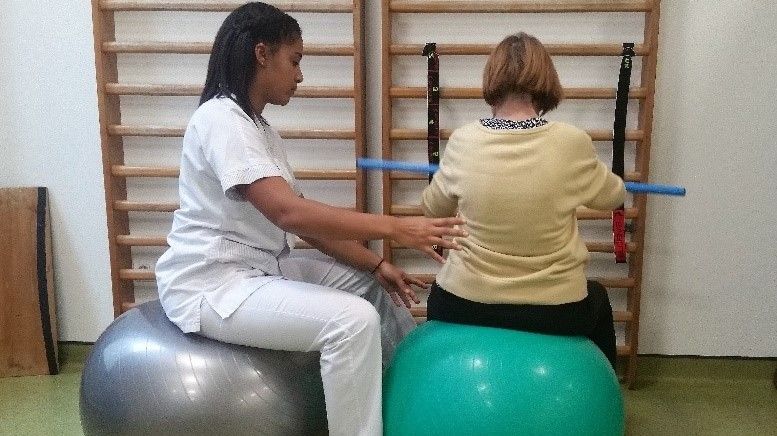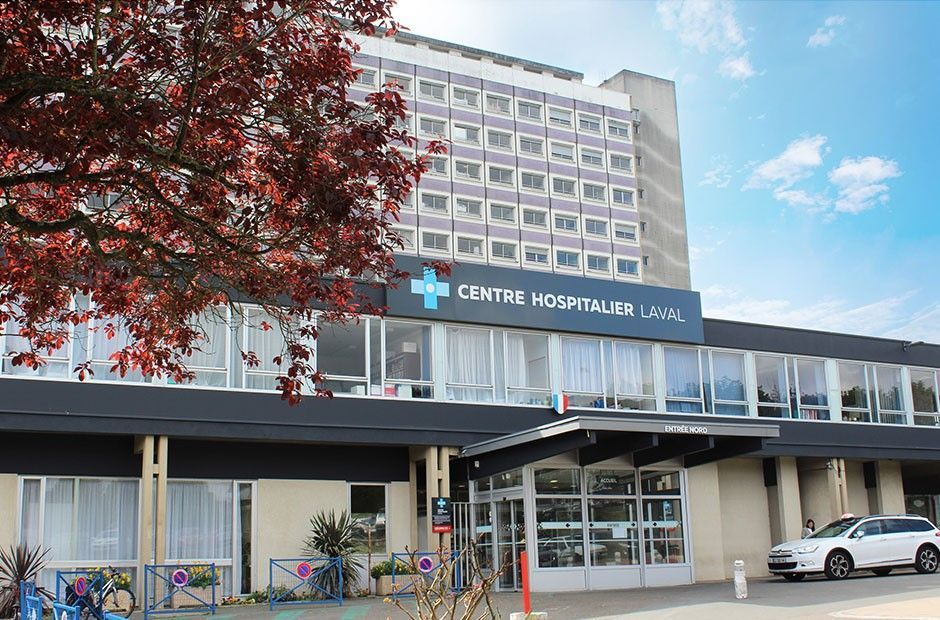My name is Zélie, I am a 4th year Physiotherapy student at CEU Valencia and I am going to tell you about my internship in France. This year I had the opportunity to immerse myself in the Erasmus+ experience in my home country…France. I have always wanted to travel and study in a different country, which is why I came to Spain. During the past four years studying here I have learnt a lot about being a physiotherapist but I want to develop my practice by seeing different ways of working.

My internship lasted for about three months from the 24th September until the 30th of December in the Laval hospital in Mayenne (western France). I was lucky enough to work in different departments such as pulmonology, resuscitation, paediatrics and cardiology. I did my cardiorespiratory practical in the department of neurology and worked in physical rehabilitation medicine for my neurology practical.
Working in a multidisciplinary team made up of doctors, nurses, physios, occupational therapists, adapted sports educators, a phsychometrist, a neuropsychologist and a social worker, I learned how different health professionals come together and how everyone works to provide the best treatment for the patient.
“THE ADVICE FROM MY TUTORS ALLOWED ME TO FACE THE REALITY OF THE HOSPITAL ENVIRONMENT AND TAKE ON RESPONSIBILITIES”
Being French, I did not have any problems with the language but in the beginning, it was a wee bit difficult to adapt to the working environment. With my limited knowledge, I was scared that I would do something wrong, but with the help of my tutors, who passed on their knowledge and advice I could take on responsibilities and confront the realities of working in a hospital.
Every day from 8.30am until 4.30pm, I went to work learning more and more each day. In cardiac rehabilitation, we had 10 patients, both men and women, participating in the program. They were divided into two groups of five people in order to better personalise their activities.

The first group came an hour before the second; this allows them to start warming up and stretching in preparation for the exercises. Then they get ready to use the equipment (bikes, treadmills etc…) for at least 40 minutes of cardio training, depending on each of their own abilities. Once they have finished their first activity, the second group has already started warming up. They move onto cardio training when the first group starts the muscle strengthening stage and then there is the cool down phase at the end of the session.
“THIS EXPERIENCE HAS SHOWN ME THAT LIFE IS FULL OF OPPORTUNITIES; YOU JUST HAVE TO TAKE ADVANTAGE OF THEM.”
For the respiratory section, I was in the department of pulmonology and resuscitation; here they do the sessions in the patient’s rooms where they are lying or sitting down. The majority of the exercises are related to breathing so that the patient can cough up the mucous that is blocking their airways.
In Neurology, every session is unique to the patient, depending on their needs on the day of the session; we have to adapt them to the patient’s capabilities and tiredness levels. Before starting the treatment we carry out a patient history to get to know what happened, asking them, about their circumstances, where it hurts and what the pain is like This is followed by a physical exam to get to know a bit more about their current state and prepare a suitable treatment for them.
For example, a session with a hemiplegic patient following a stroke starts with a small warm up using passive movements for the affected areas and carefully stretching what is necessary to treat the spasticity that is often found in these types of patients. We then treat them through the means of different exercises in order to rehabilitate the affected areas.

During my time at this centre, I learnt a lot and got to know other French students from the Laval School of Physiotherapy. They took me around the city, walking through the streets, going shopping or enjoying a coffee together after work.
Laval is also known as the “city of art and history”. It is a small city with about 49, 000 inhabitants and at first doesn’t seem very attractive, but with the contemporary architecture, old streets and botanic gardens, it does have a lot of charm. I was lucky enough to be in Laval during the festive period and there the Lavallois (people from Laval) have a 24-year-old tradition called “The Lights of Laval”. It is a classic Christmas festival in the department of Mayenne. It’s a really nice concept, every night during the festive period, Laval is lit up from both sides of the city centre and everyone stands there with wide eyes watching the spectacle.
“We are lucky tO go to a university that makes anything we need available in order to become what we want to be.”
Every year the theme of the Illuminations is different. Along the path through the city, the dream catchers light up the way. Illuminations, animations, Christmas markets… Letting everyone get carried away with the magic of Christmas!
Honestly, I loved ending the year full of dreams in the festive atmosphere of Laval. Although that brings us to the end of this short story about my Erasmus+ experience in France, I hope that it will inspire you to take the plunge. You have to know that life is full of opportunities; you just have to take advantage of them.








